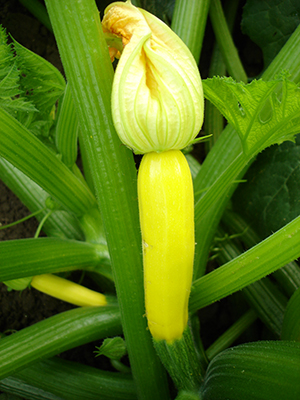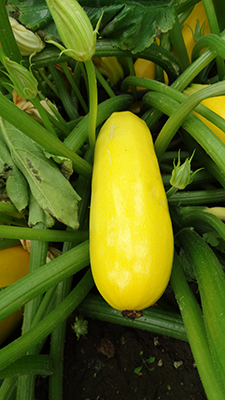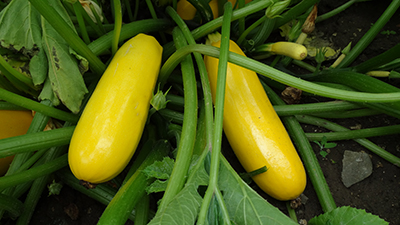Cucurbita pepo L. (Cucurbitaceae) cv. Atena Polka F1



| ENG | Zucchini Squash |
| SK | cuketa |
| CZ | cuketa |
| PL | Cukinia |
| HU |
Using
Zucchini fruits should be harvested at immature stage when the rind is soft and seeds are not developed. Fruit is rich source of nutrients, especially beta-carotene, folic acid, vitamins C and E, and minerals. Researchers have shown that seeds also contain cancer-preventing substances, known as protease trypsin inhibitors, which inhibit activation of viruses and carcinogens in the digestive tract. Seeds are a very good source of nutrients, including minerals (Zn, Cu, Fe, Mg), proteins and healthy fats. Zucchini seeds, seed oil, and pulp – like at the other summer squashes - may be useful in treatment of benign prostatic hyperplasia and anxiety-related disorders. Anthelmintic, hypotensive, hypoglycemic, antimicrobial, antiviral and antitumour activities of the fruit extracts were reported in scientific papers.
| I. | II. | III. | IV. | V. | VI. | VII. | VIII. | IX. | X. | XI. | XII. | |||||||||||||
| Sowing (greenhouse) | ||||||||||||||||||||||||
| Sowing (field) | ||||||||||||||||||||||||
| Planting | ||||||||||||||||||||||||
| Harvest | ||||||||||||||||||||||||
Botanical description and occurrence:
Zucchini is one of six extent groups of summer squash cultivated for young fruits, among colozelle, crookneck, scallop, straightneck, and vegetable marrow. Zucchini grows on annual, bushy, non-vining plant. The leaves are large, dark green with mottled silver-gray splotches and streaks on the surface. These light markings are sometimes mistaken for a mildew problem. Plants are monoecious, flowers are large, yellow, often eaten as a vegetable. Zucchini brings a cylindrical fruit, but new cultivars include round and intermediate shapes. Fruit colour varies from yellow to light or dark green, even nearly black. Many cultivars have speckles and/or stripes. ‘Atena Polka‘ F1 is a Polish hybrid with yellow-orange fruits. It forms a bushy plant with thick, green leaves, resistant to downy mildew. Through partial parthenocarpy, it starts to set fruits early and yields until the first frost.
Why to have the plant in your garden:
‘Atena Polka‘ F1 stands out yellow-orange fruits, excellent for decorate and create colorful mixed salads. This cultivar provides fresh fruits from the end of June till the first frost.
Text:
Dr. Agnieszka Sekara, University of Agriculture in Krakow, Poland
Photo:
Dr. Agnieszka Sekara, University of Agriculture in Krakow, Poland
Links to scientific articles (if it is possible):
Paris H.S. 1996. Summer squash: history, diversity, and distribution. HortTechnol. 6(1): 6-13;

